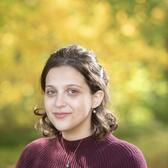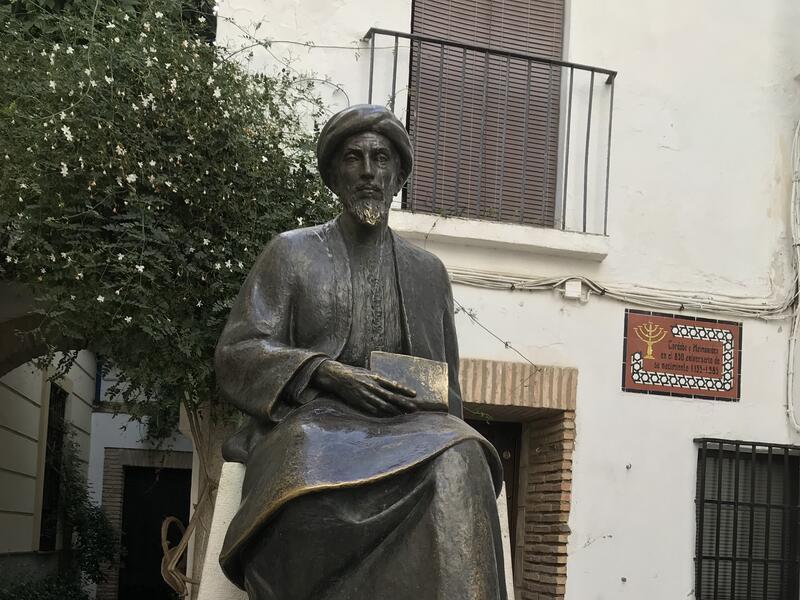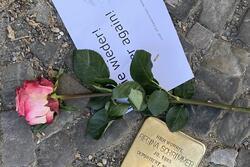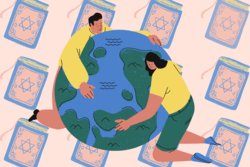Jewishness Itself is a Home
It is said that the souls of Jewish converts were at Mount Sinai when Moses received the Ten Commandments; that their souls had always been Jewish, and it just took time to figure out. Spain is a little like that. Its Jewishness has always been there; right now, it’s dormant, but it’s not gone. It took me a little while to figure that out, too.
Two weeks before the deadline, two of my best friends and I applied to study in Córdoba, Spain for the spring semester of our junior year. A last-minute decision, but I figured it was a chance to learn about Sephardic Jewry, all too often overlooked in the field of Jewish Studies. I knew that moving from New York City, one of the most Jewish areas in the world, to a country that expelled all its Jews 500 years ago, would be an adjustment; I knew I’d be visiting a lot of cathedrals. But I was sure I would find my own little ways to feel Jewish, even though I’d be so far from home. I was lucky to be paired with a Jewish roommate, and we agreed in advance that we would support each other in our efforts to feel Jewish in Spain—lighting candles on Shabbat together every now and then, for example.
Once I arrived, it wasn’t so simple, a fact I was reminded of every day. Each morning on the way to the university and each twilit evening on my way home, I walked by Calle de los Judíos, “Street of the Jews,” in the Judería, the Jewish quarter of the Old City. As I stumbled over the street’s uneven stones, I spotted flashes of gold on the ground: plaques that say Sefarad, the Hebrew word for Spain. You can find them in almost any city in Spain, marking the boundaries of the Juderías. I felt somewhat comforted by the plaques; they were a reminder that We were here.
But that comfort was tinged with sadness, maybe even resentment. Were. Past tense. I wasn’t used to seeing the erasure of Jewishness up close. As fascinated as I was by the religious history of the area, a part of me felt unwanted in the place that was supposed to be my home for the next four months. My Star of David necklace hung heavier than usual around my neck, but I still wore it, trying to ignore a discomfort that I had never felt in New York.
There were little moments when I felt profoundly Jewish, for better or worse. My roommate worked at la Casa de Sefarad, the only Jewish museum in Córdoba. Their first day of work, they took me to a private concert of Sephardic music performed by one of the museum employees. The music felt so familiar that a sweet ache for home crept into my heart with each harmonic scale and flip of the singer’s voice. It was also hopeful: I later learned that the singer was not Jewish. In fact, none of the employees at the museum were; they just wanted to preserve the remnants of Jewish culture. I was grateful that Jewish life in Córdoba was not entirely forgotten.
On Purim, my roommate and I dressed up as Captain Kirk and Mr. Spock and walked to the old synagogue to celebrate. Before the Inquisition, Jews prayed here; now, it functions as a museum. As we entered the one-room building, my roommate began to hum a prayer. I looked at the intricate Hebrew writing on the walls, drinking in the room’s emptiness. It felt abandoned. Yet, I reminded myself, it has stood this long. People prayed here once. Now they are here again.
A man walked up to us. My roommate’s prayer trailed off.
“No podeis rezar,” he said. You cannot pray here.
“Why not? It’s a Jewish holiday today!” my roommate replied.
“This is a museum now. You can’t pray here.”
My roommate prayed in silence. I admired their quiet defiance.
We left the synagogue and walked to the statue of the Sephardic philosopher Maimonides, his toes rubbed gold from tourists looking for good luck. I attempted to read a passage from the Book of Esther, and my roommate shook a grogger made of an old pill bottle with paper clips inside. We’d found our own way to feel Jewish, even though it was hard not to feel invisible.
The next month was Passover, my favorite holiday. We’d been invited to celebrate with a lovely Jewish woman, Elena, and her family. I was feeling a little heartbroken to be away from my own family on a day that meant so much to all of us, a day that represents the survival of the Jewish people. But I was glad to have somewhere to go. I made two kinds of charoset to feel some normalcy, some closeness to my family.
Once we arrived at her apartment, Elena pulled out a box full of Judaica: prayer books, a copy of the Talmud, candlesticks, a menorah. My roommate and I handed her a tea-light holder we’d purchased from la Casa de Sefarad, a beautiful glass set with blue swirls to represent the Red Sea. With tears in her eyes, Elena told us how glad she was that we were there, that she and her family hadn’t properly celebrated Passover in years. Even though she was welcoming us into her home, she was thanking us. This was the Jewish community that had felt distant since I’d left New York.
It was a night full of stories, laughter, and heartfelt reflections on what being Jewish meant to us. Elena told us the story of her conversion to Judaism: One day, she suddenly realized that she had a Jewish soul, that she always had. I had never really considered how a person came to the decision to convert. But it was abundantly clear how much Elena loved being Jewish by the way she danced while she prayed, the way she beamed at her children speaking in Hebrew. Even in one of the most Catholic countries in the world, she was so, so happy to be a Jew.
The next night, we invited our host mother to our own seder. She was so enthusiastic, respectful, and curious that I couldn’t help but smile the whole way through. She filmed us as we attempted to sing Chad Gadya in Spanish, laughing as we trudged through the words, her dog Benito wriggling in my lap. Belly full of macaroons and charoset, I went to bed, my heart also full. That weekend, two women who barely knew me had taken me in like I was their own daughter.
I realized that, even though I wasn’t at home, I wasn’t without a home, either. Jewishness itself is a home; connection is a home. And that was Spain: connecting me with a culture so old it had become translucent, just glints of gold on the streets and an abandoned synagogue. But it is still there, in the dull shine of Maimonides’ shoe; in the haunting melodies that switch from Ladino to Hebrew to English to Spanish; in the hurried lighting of Shabbat candles and the sipping of too-sweet non-alcoholic wine on Friday evenings before dinner. It is there, hidden away in a box of history, waiting to be opened again.








I remember being a tourist going through Spain on an adventure by myself in the 80’s. I went to Cordoba, partly due to their famous Flamenco dancing. During a walk, I came upon this very statue and, as a Jewish woman, I was so startled and pleased. I stayed there for quite a while wondering how it got there. Thank you for bringing back a wonderful memory. Gail in Dallas
Nice essay, Isadora! Especially this part: “Jewishness itself is a home; connection is a home. And that was Spain: connecting me with a culture so old it had become translucent...”
Good luck with your studies and your writing!
In reply to Nice essay, Isadora!… by Julie Zuckerman
Thank you, Julie! I appreciate the kind words.